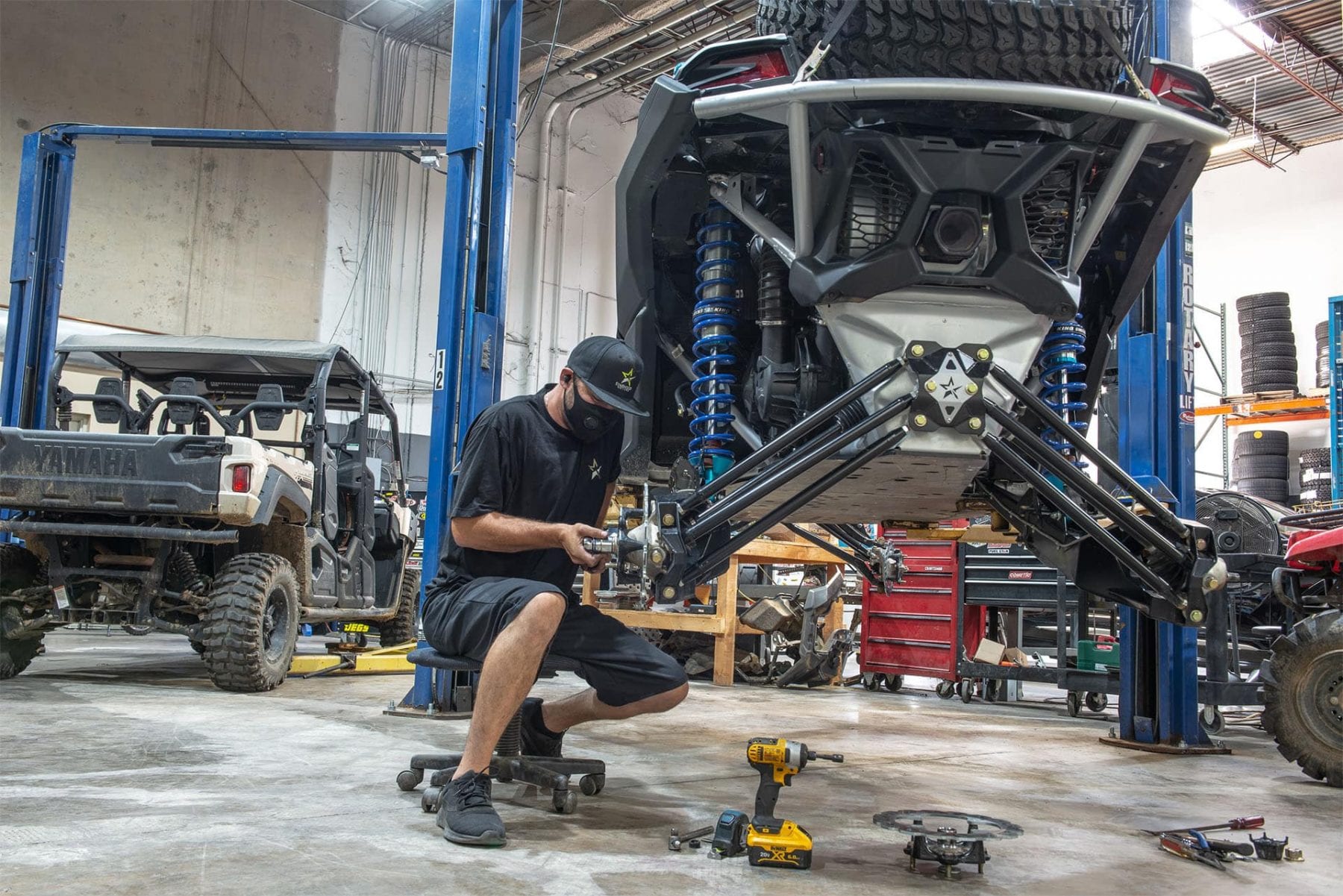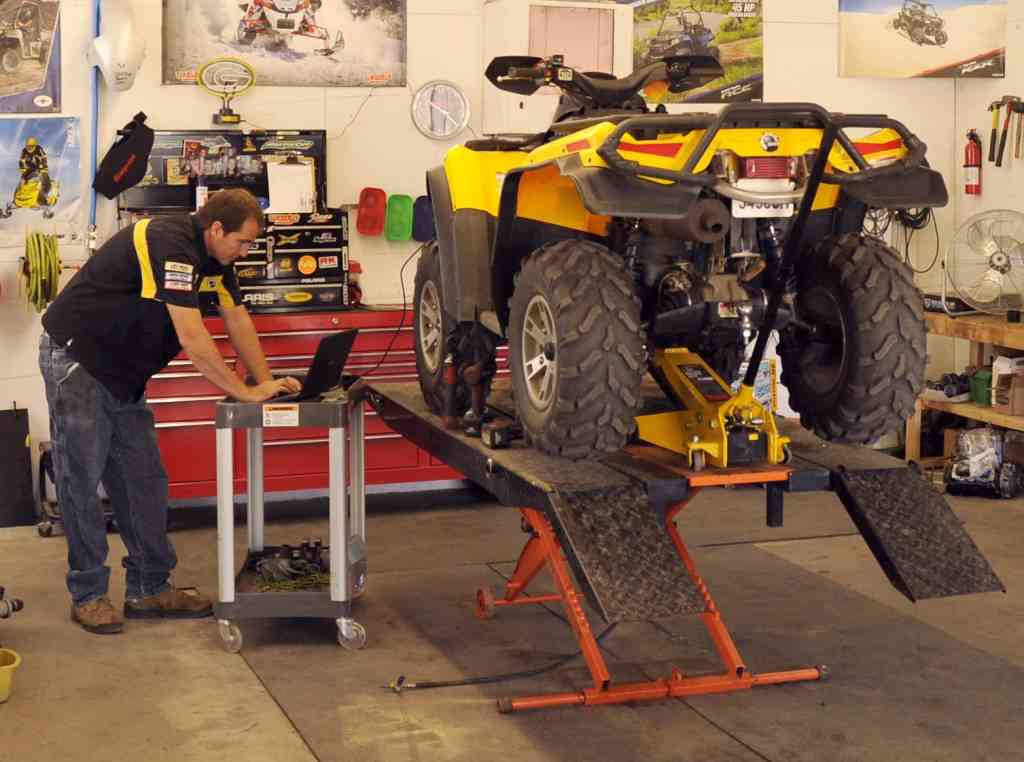ATV Experience: Overcoming Trails and Welcoming the Off-Road Spirit
ATV Experience: Overcoming Trails and Welcoming the Off-Road Spirit
Blog Article
ATV Riding Techniques: Understanding the Art of Off-Roading

Body Positioning
To efficiently browse through tough off-road terrain, it is crucial for ATV motorcyclists to regularly keep proper body placing. Maintaining the proper body setting while riding an ATV not just improves control and stability however also makes certain the motorcyclist's safety. By adopting the correct body positioning strategies, cyclists can effectively distribute their weight, boost their balance, and reduce the risk of crashes or injuries.
One secret aspect of appropriate body placing is keeping the feet on the foot secures. Positioning the feet on the foot pegs permits the biker to keep stability and control over the ATV. The cyclist's knees ought to be somewhat bent, offering a small suspension to maintain and take in shocks equilibrium. In addition, the cyclist's top body need to remain relaxed and flexible, enabling seamless and quick movements when necessary. This includes keeping a light grip on the handlebars to maintain control without excessive force.
In addition, the cyclist's eyes should always be focused in advance, checking the surface and anticipating any barriers or adjustments in the route. By preserving an onward stare, motorcyclists can make split-second choices and respond properly to testing surface.
Throttle Control
Building upon the significance of correct body placing for ATV motorcyclists, grasping throttle control is a vital skill that enables riders to effectively maneuver through different off-road surfaces. Throttle control describes the ability to regulate the amount of power provided to the ATV's engine. By comprehending exactly how to control the throttle, bikers can make certain a regulated and smooth acceleration, allowing them to browse challenges with precision.
Among the essential aspects of throttle control is finding out to modulate the throttle efficiently. Sudden or jerky motions can cause the ATV to shed traction or end up being unstable, making it tough to maintain control. Instead, motorcyclists ought to go for progressive and calculated throttle inputs, specifically when passing through tough terrains. This method permits the ATV to keep a stable rate and provides better grip, lowering the risk of mishaps.
Along with smooth modulation, riders need to additionally learn just how to stabilize the throttle with other riding methods, such as body positioning and braking. For example, when climbing up steep hillsides, riders need to use adequate throttle to keep energy without overpowering the ATV or causing wheel spin. When coming down high slopes, cyclists ought to use the throttle in mix with proper body placing and stopping to keep control and avoid the ATV from gliding or tipping over.

Braking Strategies
A crucial facet of ATV riding strategies is mastering efficient stopping strategies. Knowing how to brake correctly can make a considerable distinction in your safety and security and control over the vehicle when it comes to off-roading. One of the most important stopping methods is making use of the front brake greater than the rear brake. The front brake offers most of the stopping power, so it is critical to use it carefully. It is vital to bear in my sources mind that harsh stopping with just the front brake can create the ATV to pitch ahead, possibly leading to loss of control or even turning over. It is suggested to apply both brakes concurrently, however with more pressure on the front brake. One more crucial strategy is to stay clear of securing the wheels while stopping. Locking the wheels can lead to skidding, making it difficult to preserve control. To avoid this, press the brake levers progressively and release them somewhat if you feel the wheels securing. By Web Site mastering these stopping methods, you can enhance your ATV riding skills and ensure a risk-free and delightful off-roading experience.
Cornering Techniques
One important element of grasping ATV riding strategies is recognizing effective cornering strategies. Cornering on an ATV can be difficult, yet with the best strategies, bikers can browse turns securely and efficiently. The trick to successful cornering is to preserve control of the ATV while taking full advantage of grip and reducing the danger of toppling.
To perform a correct cornering technique, motorcyclists should approach the turn at an ideal speed, ensuring they are not going as well slow-moving or too quick. It is essential to change the body weight towards the inside of the turn, leaning into it to maintain balance and stability. This assists for the centrifugal pressure and maintains the ATV upright.
Additionally, motorcyclists must maintain their eyes concentrated on the exit point of the turn instead of the instant path in advance (ATV). This enables for smoother and extra specific guiding, as it helps the rider expect any type of barriers or adjustments in surface
Additionally, correct throttle control plays a significant function in cornering. Cyclists must regulate the throttle efficiently, preventing unexpected velocities or slowdowns, which can cause loss of control.
Uphill and Downhill Riding
When browsing off-road surface, ATV cyclists should this content master the methods for uphill and downhill riding to keep control and ensure security. Uphill riding requires a combination of equilibrium, throttle control, and weight distribution. As riders rose steep slopes, they ought to lean forward to move their weight towards the front of the ATV, which enhances grip on the front wheels and stops the car from flipping backwards. ATV. Additionally, preserving a regular throttle and avoiding unexpected acceleration or slowdown aids to protect against the ATV from shedding energy or obtaining stuck. Downhill riding, on the other hand, calls for motorcyclists to lean back and move their weight towards the back of the ATV. This helps to keep security and prevent the lorry from turning forward. It is essential to use the brakes moderately and apply them progressively to prevent locking the wheels and blowing up. Riders should pick the course with the least challenges, as navigating downhill can be a lot more difficult due to the raised rate and decreased traction. By mastering the strategies for uphill and downhill riding, ATV motorcyclists can confidently deal with various off-road surfaces and take pleasure in a safe and exhilarating journey.
Verdict
In conclusion, grasping the art of ATV riding calls for a combination of body positioning, throttle control, stopping techniques, and efficient cornering. Uphill and downhill riding additionally require certain abilities to browse safely. By carrying out these techniques, motorcyclists can boost their off-roading experience and improve their overall control and security on the ATV.
ATV Riding Techniques: Understanding the Art of Off-Roading is a comprehensive guide that delves into the complexities of understanding the abilities required for off-road ATV riding. Whether you are a newbie or a skilled cyclist, ATV Riding Techniques: Mastering the Art of Off-Roading supplies important advice to aid raise your off-road ATV riding abilities to the next level.

Report this page